How Long Does It Take To Get Cvs Covid Results
Last week I self-administered a COVID-19 test in my car, by sticking a cotton swab quite a ways up both of my nostrils, while a care provider in full PPE silently observed me on the other side of my sealed window. 2020 is weird.
To backtrack a bit, CVS Health has opened rapid COVID-19 drive-through tests in Georgia, Rhode Island, Massachusetts, Connecticut, and Michigan.
These sites are the result of an initiative by CVS to manage the risk of COVID-19 by expanding the availability of testing throughout the U.S.
With so much uncertainty in these early stages of the pandemic response, I thought it would be helpful to share my experience at one of the nation's first rapid testing operations.
Though getting tested has given me some peace of mind (results came back negative!), I still feel pretty helpless in the face of this unprecedented health emergency.
However, firsthand knowledge has been a comfort to me lately, which is something I hope to extend to anyone who reads this blog.
I have broken down my experience below and included some takeaways to consider if you pursue the same test.
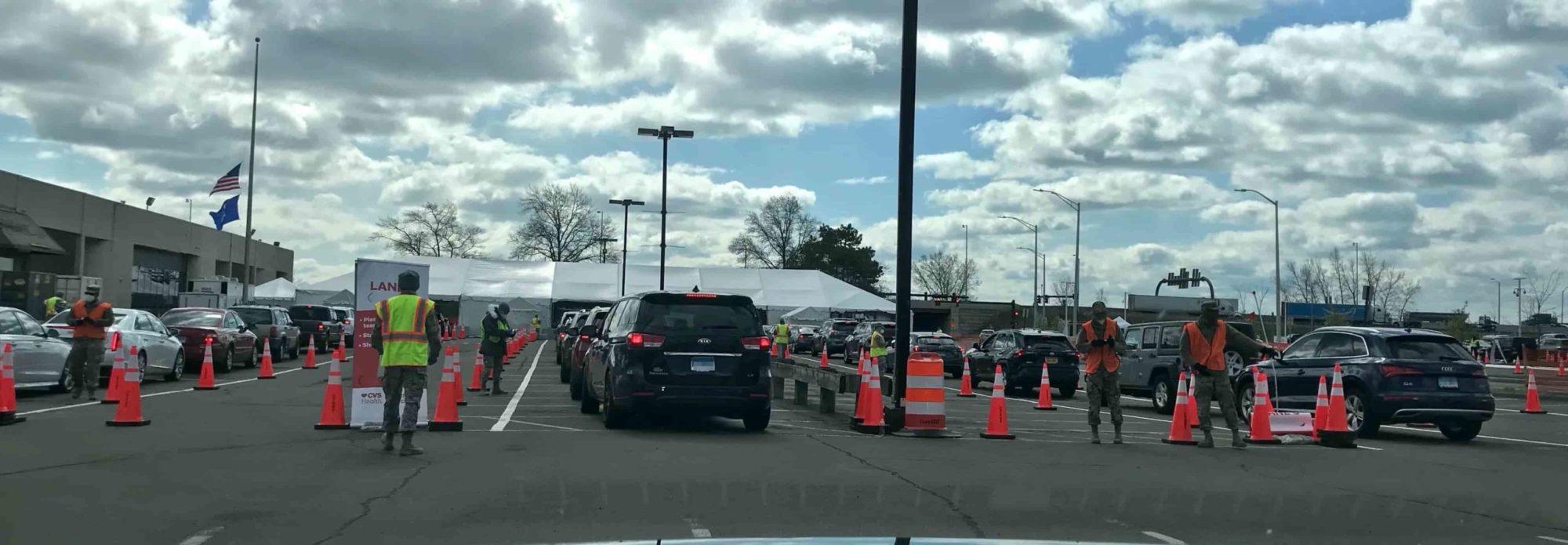
CVS Rapid COVID-19 Drive-Through Testing: A Quick Overview
The testing sites are overseen by licensed care providers from MinuteClinic, CVS Health's retail medical clinic. Each location provides state residents with rapid testing and on-the-spot results at no charge.
The specific test is called the Abbott ID NOW COVID-19 test, which can deliver positive results in 5 minutes and negative results in 13 minutes.
The site in Connecticut, where I got tested, is designed to conduct up to 750 tests per day, seven days a week, to eligible Connecticut residents.
You can find out if you are eligible for CVS Rapid COVID-19 Drive-Through Testing here.
Using Telehealth to Talk About Coronavirus
I was first notified of the CVS rapid test by my primary care doctor. Following a weekend of a borderline fever and extreme fatigue, I scheduled a telehealth appointment to discuss possible coronavirus concerns.
Our video conference revealed a few things. First and foremost, it made me realize just how early we are in the country's response to COVID-19, and how many unknowns we still must sift through to make as informed decisions as possible.
In regards to my symptoms, he simply could not be sure whether they were caused by COVID-19. People have tested positive while being completely asymptomatic. Others check all the boxes of the tentpole symptoms – fever, shortness of breath, cough – and test negative.
To make things even more unclear, my doctor warned that I could test negative that day and test positive the next.
So, what are we supposed to do in this situation? Well, a rapid drive-through test certainly can't hurt.
At this stage, efficient testing at this scale is a critical frontline defense against COVID-19. Due to my symptoms, potential exposure to an infected individual, and the fact that I am immunocompromised, we decided it was a good idea to pursue the CVS rapid test.
He instructed me to go to the CVS website, where I could pre-register for a test (find the link right on top of the homepage). Be mindful that these rapid testing sites have limited materials and are facing huge demand, so they are prioritizing registration for high-risk patients.
Before the call ended, my doctor requested that I contact him if my results came back positive because care providers are still compiling a coronavirus symptom knowledge base. Those words stuck with me in particular. Never in my lifetime has such a deadly illness (or any illness for that matter) lacked sufficient empirical data for treatment in this nature.
I understood the reality, but I was not necessarily satisfied with the situation. I'm either fine or a walking, talking, coughing test subject? It was a new feeling.
After registering on the CVS website, I was able to schedule a 10:15 am appointment two days later at the former Gateway Community College campus in New Haven.
Connecticut's CVS Rapid COVID-19 Drive-Through Testing: A Step-by-Step Journey
Unsure of what to expect, I arrived at the site 15 minutes early. I brought the following items with me, and I suggest you do the same:
- A face mask
- My driver's license
- Documentation that confirmed my appointment (a confirmation text message on my phone)
- Tissues for post-test purposes
I was directed to the back of a parking lot that was meticulously adorned with traffic cones. This was one of the first things I noticed – the traffic cones were out in force. Hundreds of cones carved up the huge parking lot, funneling cars through the testing system in a remarkably organized fashion.
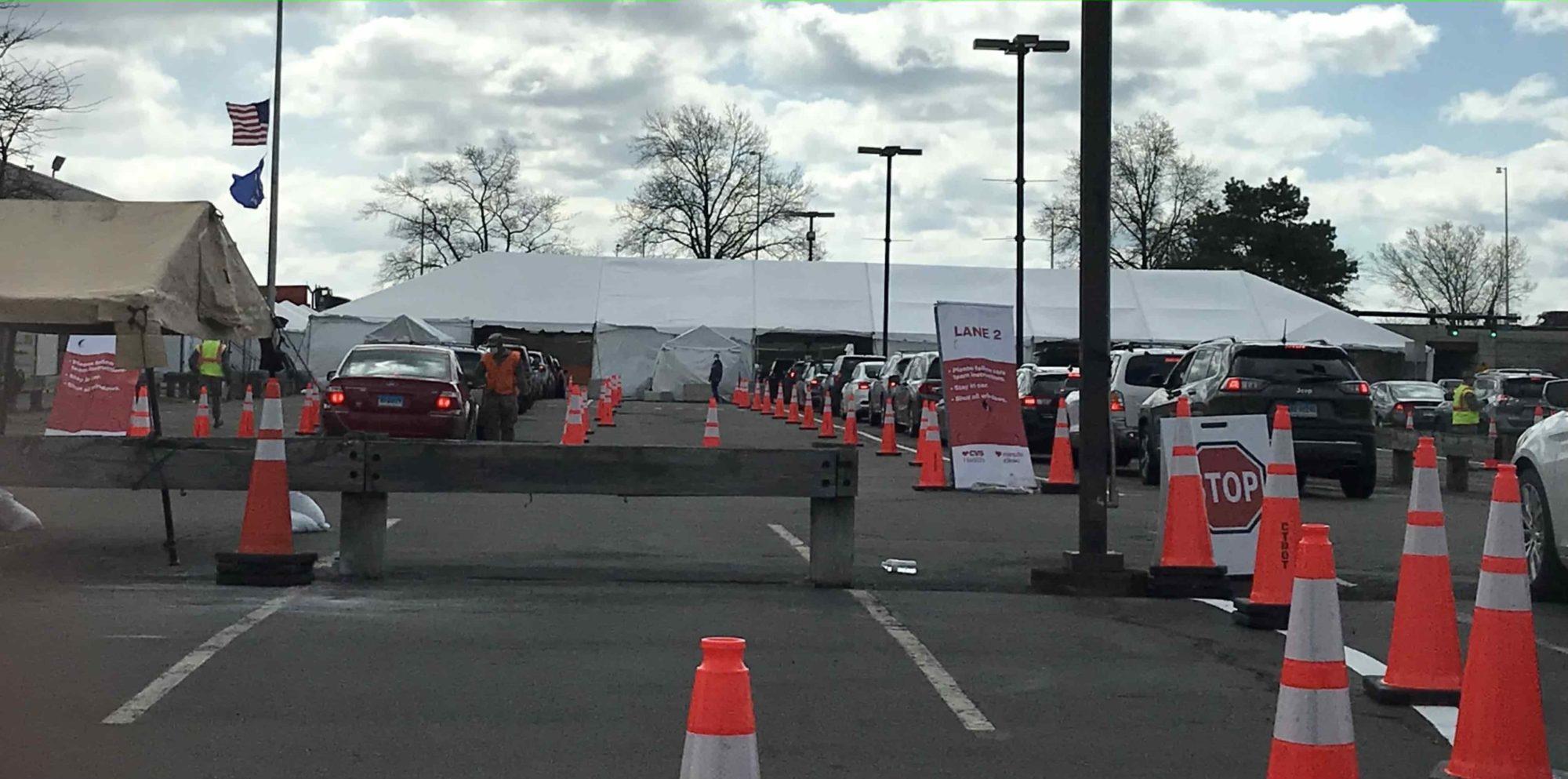
My first stop was at the "check-in" juncture. There, I pulled my car up to a man wearing a mask. With my mask on safely, I began rolling down my window, to which the man promptly responded, "please roll your window up."
This would become a theme. Patients were to only crack our driver-side window about 3-4 inches when communicating with a site worker.
Then, when all essential verbal communication was done, the window gets rolled up all the way. Any necessary exchange of information that could be done with a sealed window between us was handled that way.
For example, when I checked in, the man told me that he needed to see my appointment confirmation text message and I.D., which I would present to him by sticking them up to my closed window.
As someone who has lived with an autoimmune disease from a young age, I can't stress enough how appreciated the caution was. I had concerns about possible exposure going in, but after being there myself I can attest that site workers are doing everything they can to control and prevent the chance of exposure.
In addition to the strict window protocols, site workers stand six feet away from your car, and they all wear masks across the board. On a windy day, like it was when I was there, answering questions sometimes felt like a shouting match. The six-foot gap between us was exacerbated by mask-muffled words, a virtually closed window, and persistent gusts of wind.
What a stark contrast from how we used to get directed in a parking lot or pay an entrance fee to the beach. These laborious conversations were yet another example of how the normal ways of doing things have been replaced by more burdensome, prudent methods.
I then entered a four-lane cone-way that led to the testing queue.
It was here that I got my first full glimpse of the operation. Three separate streams of cars were entering the testing stage housed under a military-grade tent.
Once I was directed into Lane 1 for testing a member of the National Guard continued my registration. He took down my information and asked me a few questions about my health and risk factors.
After that, I rolled on to the testing stage. I was flagged down by a CVS pharmacist who confirmed my information again and then waved me into the testing stage.
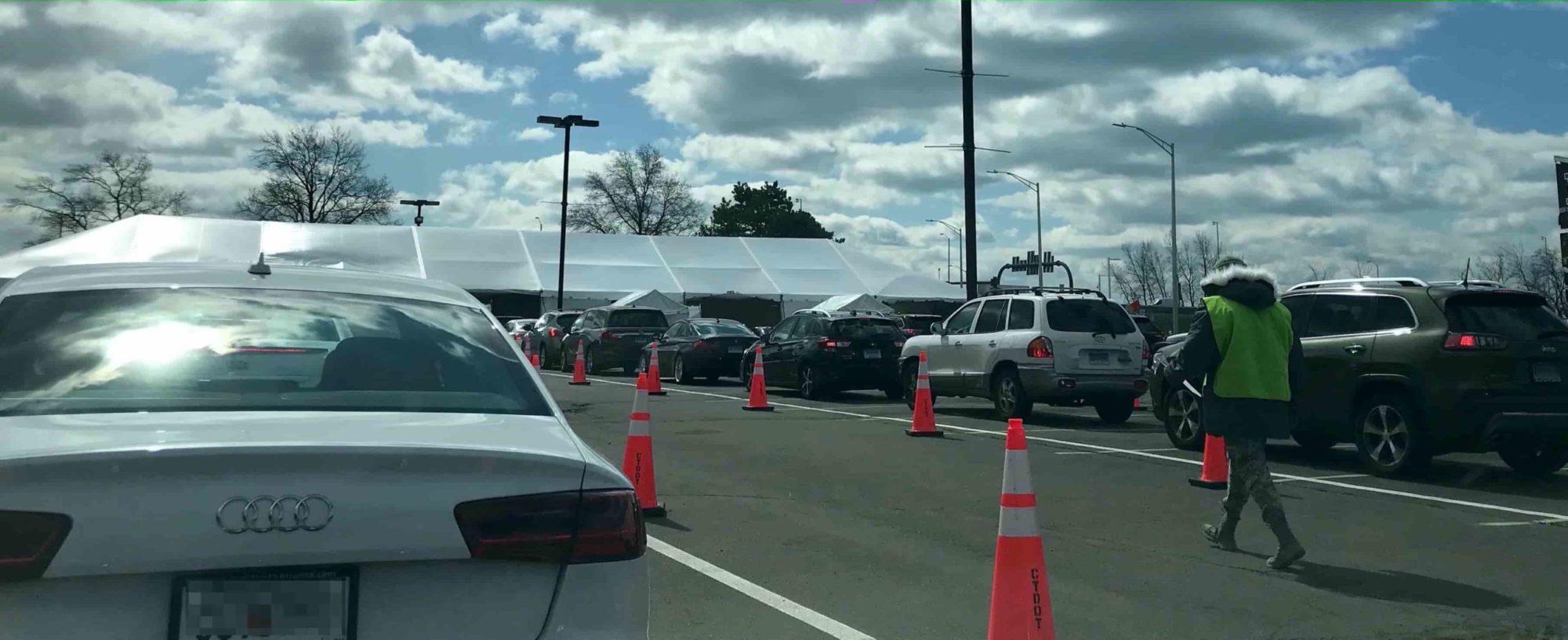
I pulled my car up to a CVS Health care provider wearing full PPE – white gown, gloves, face mask, and a face shield.
I rolled my window down to the previously negotiated height and the man greeted me warmly.
He reconfirmed my information for a third time and then instructed me on how to self administer the cotton swab test and what would happen next. Here's a rundown of his instructions:
- Take the unopened cotton swab from him.
- Roll up my window.
- Remove my mask.
- Remove the swab from the packaging, but keep the packaging intact and available.
- Insert the swab at least one inch into my nostril (warning: eyes may water, also it's not exactly comfortable).
- Swab the inside of my nostril with 15 slow rotations.
- Remove the swab and do the same in the other nostril.
- Return the swab to the packaging in the same way that I opened it – swab first
- Put my mask back on.
- Roll the window down and place the packaging containing the used swab onto a piece of paper he extends to retrieve it.
- Roll the window back up.
- Follow the cones and direction from site workers to proceed to the waiting area to await test results.
- In about 15 minutes I would get a call on my cell phone from a (401) area code with my results.
- After receiving the call, a site worker would bring physical documentation of the results to my car, placing them under my windshield wiper. Once they had walked at least 6 feet away from my car, I would get out of my car and retrieve the results.
- Follow directions out of the testing site.
And, to his and the entire operation's credit, that is exactly what happened.
I was in and out in under 90 minutes.
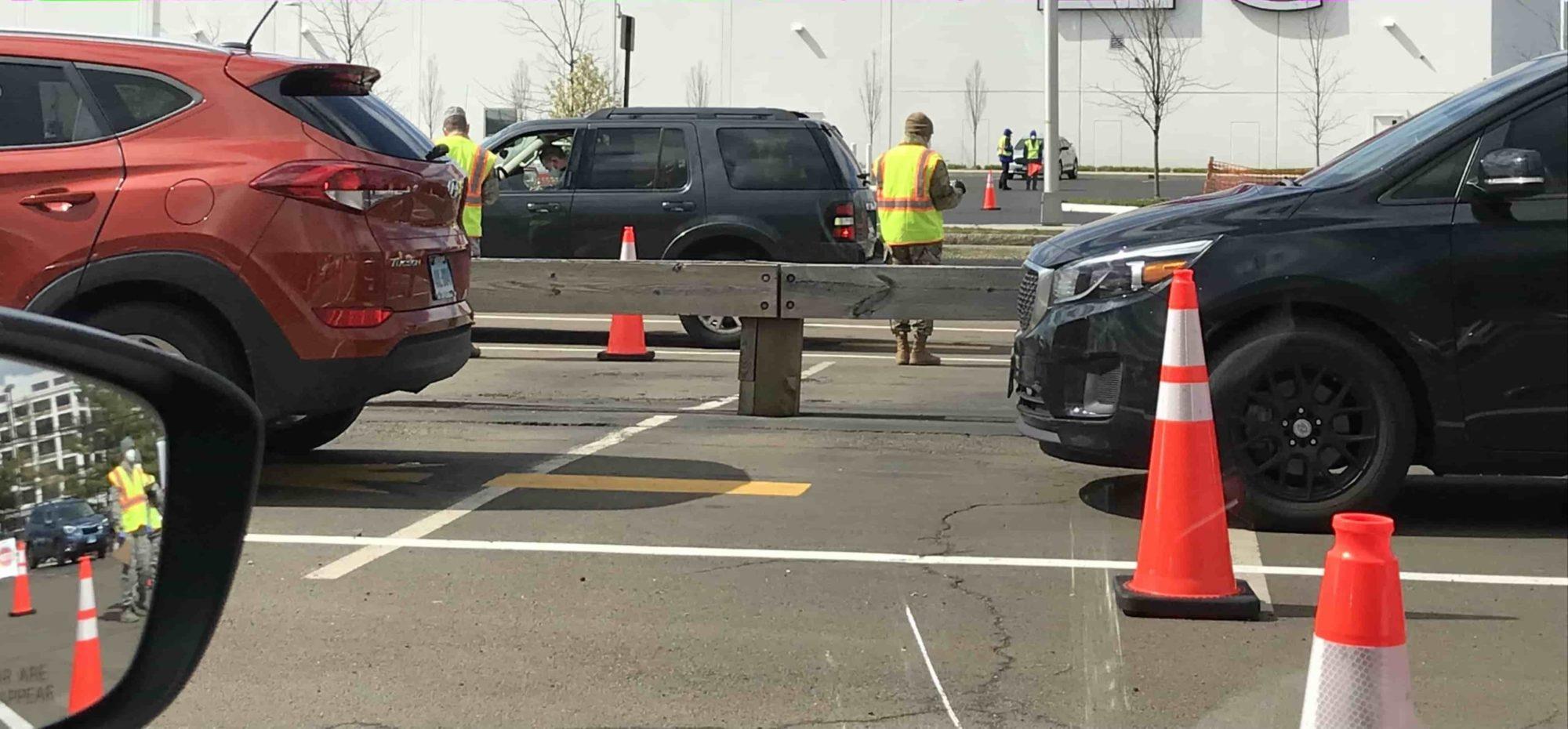
COVID-19 Rapid Testing: Thoughts and Takeaways
The test is completely self-administered. It is a simple enough task, but I lack any related medical training that could help me administer the test properly.
It is difficult to gauge how far 1 inch is with a cotton swab jammed into your nose. After I stuck the swab up the first nostril as close to an inch as I could guess, I glanced at the care provider, who gave me a gloved-thumbs up.
After a few rotations, my eyes started to water. If he gave me the thumbs-up, and my eyes watered, then I had to trust in that. Still, it felt like a rather flimsy two-part authentication – it was impossible to know if I administered the test perfectly.
Even now I have thoughts like, what if I missed the coronavirus by a few centimeters?
At the time, my doctor's words rattled around my head – test negative today test positive tomorrow. It was frustrating to know that, even if I had administered the test correctly, I still couldn't be completely confident that my results were accurate.
Taking into account how my symptoms recovered over the next few days is a great reassurance, but still – those thoughts remain in the back of my head.
With all that being said, there does not seem to be a better system to test vulnerable and potentially infected patients in a way that protects the site workers and hundreds of state residents who pass through the site.
This is a huge first step, and I am grateful that I live in a state where I could access the test with relative ease.
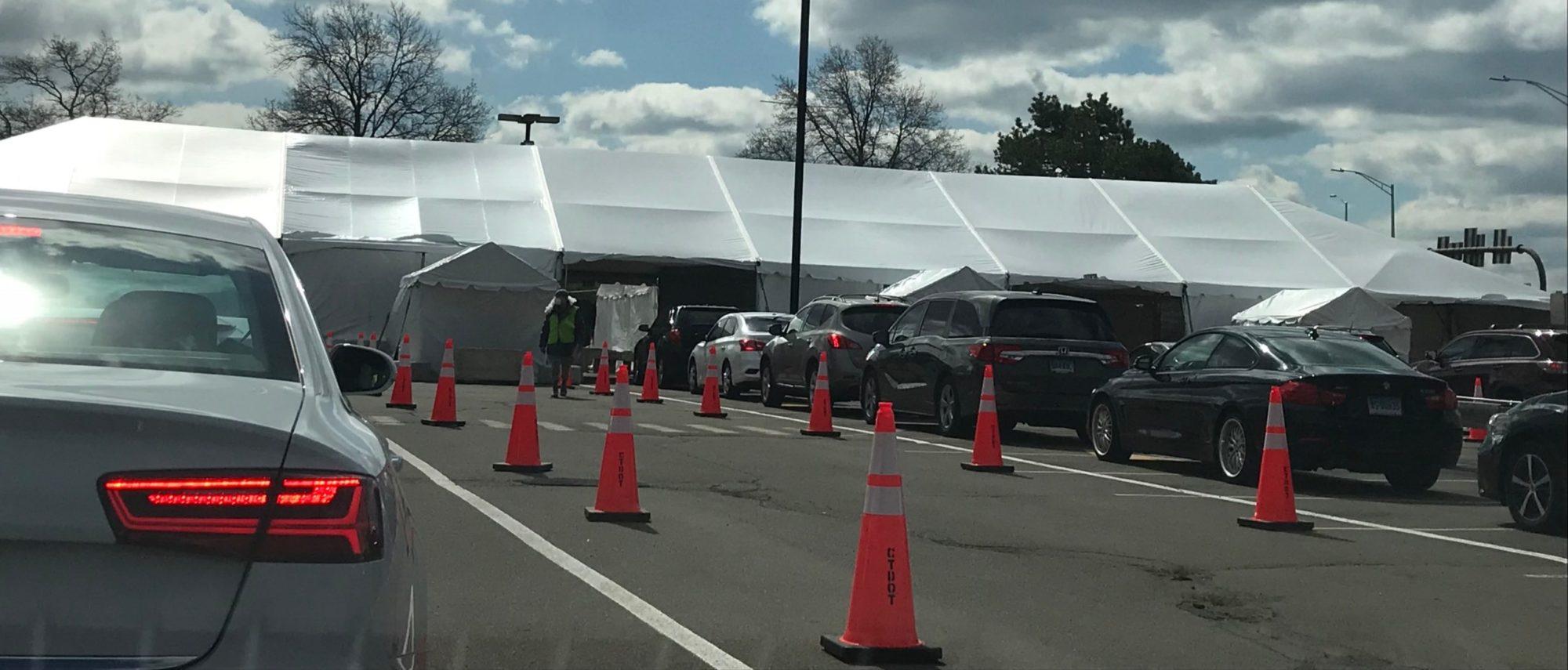
The entire site was exceptionally organized. Site workers kept an efficient flow of cars running through the system without much difficulty at all. I'm sure an incredible amount of planning went into the operation, and CVS was able to learn from their experience in 3 other states before opening the Connecticut location, but the coordination was impressive nonetheless.
From what I saw, site workers included CVS Health licensed care providers, CVS pharmacists, Connecticut National Guard, Connecticut State Police, and parking attendants. Everyone was working hard and in an orderly fashion.
I was especially impressed with the parking attendants and how they navigated a potential logistics nightmare. I really can't stress enough how organized the entire system was, from the cone placements to the different staging areas pre-test and post-test. As a former summer camp traffic controller for drop off and pick-up, I found myself marveling at their success.
———
My phone call from the (401) area code was both comforting and unsettling. First, the woman calling told me that my test came back negative.
Unfortunately, she spent the rest of the call stressing that my results meant that the symptoms that caused me to get tested were most likely not caused by COVID-19.
As a result, she advised that I continue to observe social distancing and diligently monitor my symptoms in the coming days.
———
If one thing from my experience stuck out the most, it was how much emphasis the site workers put on the height of patients' driver-side windows. Everywhere I looked, site workers were using a variety of hand motions to get patients to roll their windows up farther before engaging them.
The way so many drivers naturally rolled their windows all the way down was such a stark contrast to site workers' attention to this detail. The professionals were prepared, informed, and committed to upholding the utmost safety standards.
As for us, we were just there to get tested, naively operating our windows in a pre-pandemic fashion.
It was a good reminder of the prudence that is still necessary in all public places. The site workers took great care to mitigate the risk of any spreading to or from a resident. From what I saw at the testing site, the general public does not share that instinct, but we should pay attention to it.
———
Tissues come in handy while waiting for results.
I Got My CVS Rapid COVID-19 Testing Site Results – Now What?
If you tested positive for COVID-19 at a rapid testing site, I understand that you received a set of instructions outlining next steps from your (401) phone call. Ideally, you are also addressing your condition with your primary care doctor.
As for those of us who tested negative, well, we still have to proceed with caution.
Because of the inconclusive nature of the results, site workers and industry experts stress the need to monitor symptoms and remain careful.
Until there is a comprehensive, totally reliable test, we must turn to supplemental treatment methods to manage any signs of COVID-19.
There are ways that you can take this matter into your own hands, such as purchasing healthcare devices that can measure critical biometrics.
For example, there are the recent reports of how pulse oximeters are a useful at-home tool for monitoring a potential case of coronavirus. In seconds, these devices provide a reading of your heart rate and blood oxygenation level.
Many coronavirus patients have exhibited a very low blood oxygenation level, which is one of the factors that contribute to shortness of breath in these cases.
However, patients' blood oxygenation levels have been found to drop to alarmingly low levels before they experience a shortness of breath.
Periodically using a pulse oximeter throughout the day can provide valuable context about your blood oxygenation, and therefore how concerned you should be about a potential case of COVID-19.
At this stage, using a pulse oximeter at home could be the difference in you seeking medical attention for coronavirus before it is too late.
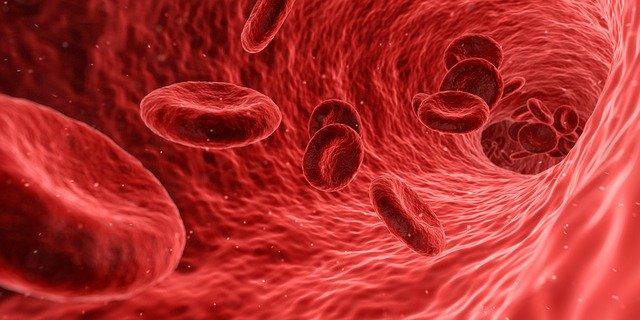
On the other side of the care spectrum, providers can also assist patients in comprehensively tracking their symptoms.
Our symptoms are still just about all we have to go on currently, so being able to keep a record of the symptoms you experience over time can be very informative.
Depending on how thoroughly they can digitally engage their patients, care providers can remotely administer certain assessments or measurements for patients to use via patient portals, such as a user-friendly symptom tracker.
Keeping track of your temperatures and which days you felt fatigued in your head, or scribbled on a piece of scrap paper, can be an unreliable system.
Being able to quickly log in to a patient portal and record your relevant symptoms in a digital assessment is a simple and accurate alternative.
As a result, you can easily compile a holistic view of your coronavirus-related symptoms in one place.
Furthermore, if you do pursue medical attention, your doctor will have access to reliable historical data to help analyze your condition.
Closing Thoughts
This drive-through test was a one-of-a-kind experience, and will hopefully be a once-in-a-lifetime one as well. However, I was both pleased and impressed by how all the organizations and moving parts involved came together to increase access to such important testing.
If you were hesitant to schedule a drive-through test due to logistical or safety issues, rest assured that neither were a problem at my site. I was able to get in and out promptly and with ease, and left feeling reassured by my results.
I hope my experience gives you a better idea of what to expect at a rapid testing site near you, and that you are able to navigate the pandemic as healthily as possible.
At Sigmund, we've been monitoring the challenges that the pandemic has imposed on the healthcare field all along. If this blog post was interesting or helpful to you, you may be interested in more content from The Sigmund Pulse. Consider subscribing below!
"
How Long Does It Take To Get Cvs Covid Results
Source: https://www.sigmundsoftware.com/blog/cvs-healths-rapid-covid-19-drive-through-testing-site/
Posted by: flowersdowanceares.blogspot.com

0 Response to "How Long Does It Take To Get Cvs Covid Results"
Post a Comment